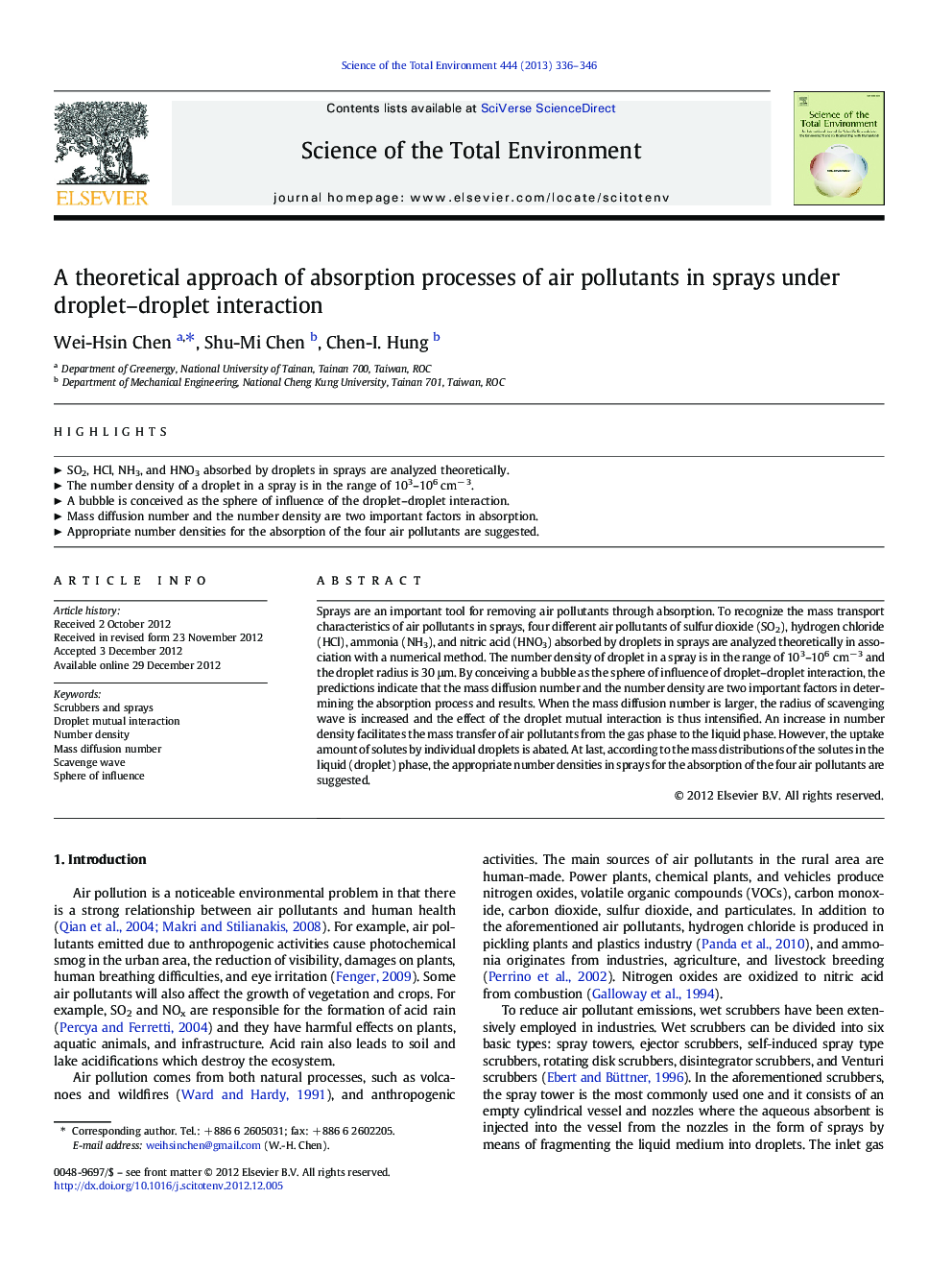| کد مقاله | کد نشریه | سال انتشار | مقاله انگلیسی | نسخه تمام متن |
|---|---|---|---|---|
| 4429071 | 1619809 | 2013 | 11 صفحه PDF | دانلود رایگان |

Sprays are an important tool for removing air pollutants through absorption. To recognize the mass transport characteristics of air pollutants in sprays, four different air pollutants of sulfur dioxide (SO2), hydrogen chloride (HCl), ammonia (NH3), and nitric acid (HNO3) absorbed by droplets in sprays are analyzed theoretically in association with a numerical method. The number density of droplet in a spray is in the range of 103–106 cm− 3 and the droplet radius is 30 μm. By conceiving a bubble as the sphere of influence of droplet–droplet interaction, the predictions indicate that the mass diffusion number and the number density are two important factors in determining the absorption process and results. When the mass diffusion number is larger, the radius of scavenging wave is increased and the effect of the droplet mutual interaction is thus intensified. An increase in number density facilitates the mass transfer of air pollutants from the gas phase to the liquid phase. However, the uptake amount of solutes by individual droplets is abated. At last, according to the mass distributions of the solutes in the liquid (droplet) phase, the appropriate number densities in sprays for the absorption of the four air pollutants are suggested.
► SO2, HCl, NH3, and HNO3 absorbed by droplets in sprays are analyzed theoretically.
► The number density of a droplet in a spray is in the range of 103–106 cm− 3.
► A bubble is conceived as the sphere of influence of the droplet–droplet interaction.
► Mass diffusion number and the number density are two important factors in absorption.
► Appropriate number densities for the absorption of the four air pollutants are suggested.
Journal: Science of The Total Environment - Volume 444, 1 February 2013, Pages 336–346